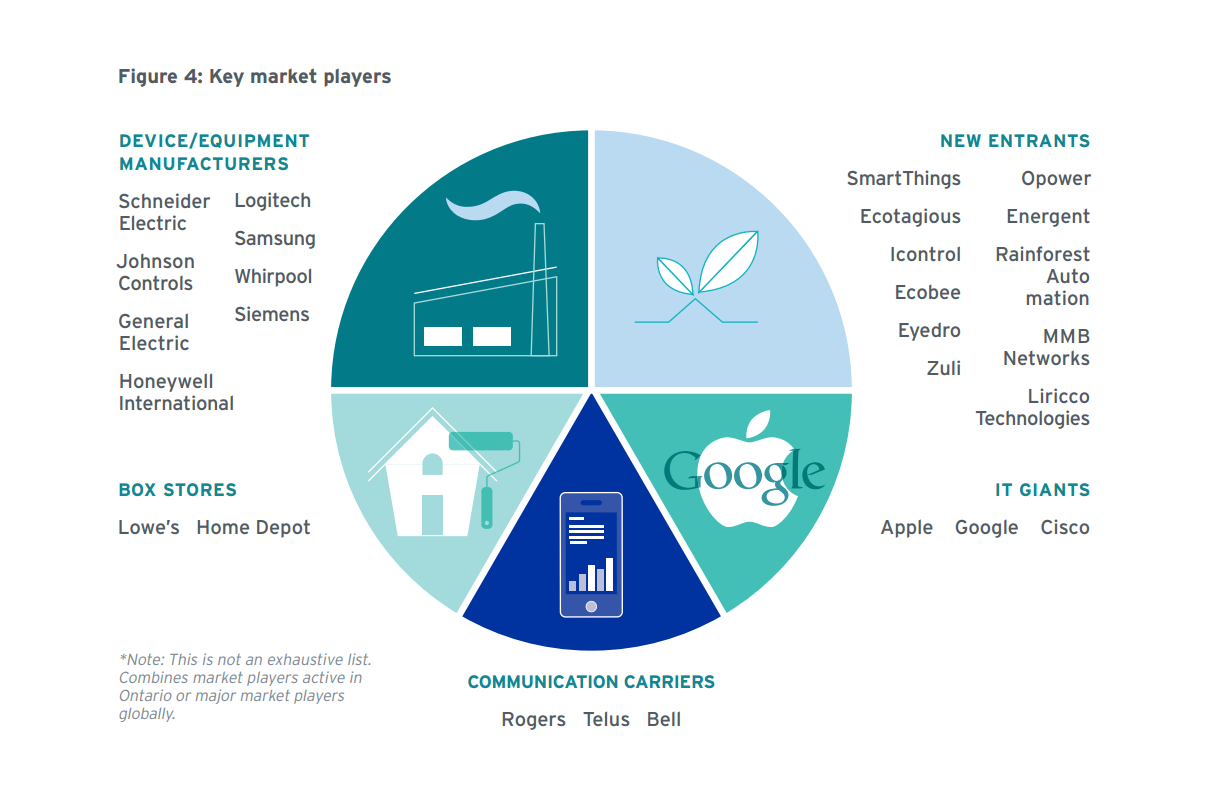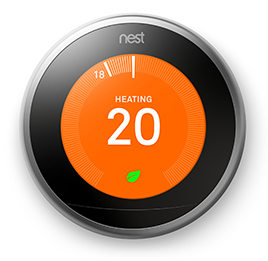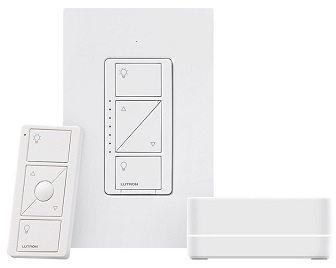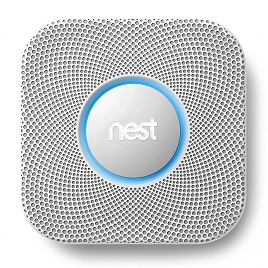What is a Connected Home?
A connected home is a household that is able to connect and communicate with its digital devices. The concept of inter-connectivity emphasizes that the devices in a home need to be thoughtful of the owner in order to add value and convenience.
“THE SMART HOMES MARKET IS GROWING AT 17% CAGR TO 2020”
*As reported by the Smart Homes Report 2015 by Reportnreport.com
Technology research firm Gartner is predicting that a typical family home could contain more than 500 smart devices by 2022.
The leading categories in this market pertain to energy management, safety & security, and home automation devices such as wireless lighting control.
These big players are investing resources to push the market's innovation
Influencers in the market
As one of the fastest growing categories, all the big tech players have allocated their attention and resources into the market to capitalize on the opportunity. Google’s Nest Labs is leading multiple product categories such as smart thermostats while Apple and Samsung are among others who have already launched their own Home Automation platforms onto the market. Among all these companies buying into the smart home and “Internet of Things” trend, there are specific products that have established themselves as essential items in the modern home. More and more developers are taking part in making these connected solutions a reality due to the surprisingly quick adoption rate of the mass market home owner.

*Chart above taken from the MaRS Market Insights – “The Connected Home: Smart automation enables home energy management”
Growth and Opportunity
Today’s consumers want devices that solve real, everyday problems
Consumers will adopt the value of a connected home sooner than later.
Simplicity and ease-of-use trump technological innovation. That said, the essential connected devices are a combination of both. 50% of consumers say they plan to buy at least one smart home product in the next year. Over the span of the next 5 years, the adoption of smart technology is expected to grow significantly. While a fair number of mainstream consumers still don’t entirely understand connected home devices, consumers who know someone with a smart home are 66% more likely to be excited about the possibilities of technology and ultimately want to take part in the evolution of the modern home. In other words, home owners want a connected home, they just haven’t had the opportunity to adopt it into their existing homes. Using connected in your developments early will just make it easier for home buyers or your clients to say yes.
Surprisingly significant early level of interest from consumers.
There are 3 main reasons why interest and feedback has been so positive from home owners, industry professionals, and even companies adopting connected solutions. Energy prices are expected to rise as consumers are continually more and more engaged with smart phones and the “Internet of Things”. Combine this with the energy consumption of the commercial and public sectors (municipalities, universities, schools, and hospitals), the cost saving potential is huge. A smart thermostat could save a household over $100 in their energy bill annually, imagine what a smart meter and controlled system can do for a commercial building! A building of that magnitude has the potential to reduce 30% of their office operating costs. Lastly, the abundance of resources in the market is moving the market and its products forward swiftly. The IT and manufacturing giants are leading the way with their own ventures such as Google’s $3.2 billion acquisition of Nest Labs.
Understand your clients
Demographics
Resonant Demographics
The most responsive demographic is the Millennials age group (25-34) who are characterized as the most tech-savvy generation of home owners to date. Following them is the largest segment of home owners: family households. This demographic sees the value of convenience and saving money as the biggest benefits of a connected home. Lastly, many consumers have identified that connected solutions offer additional security and convenience to a growing senior segment. While the elderly may not know how to integrate these solutions themselves, they will surely benefit from these devices removing the risks and challenges of struggling with technology.
84% of millennial respondents believe technology is an absolute home essential.
The “Better Homes and Gardens Real Estate” (BHRGRE) Survey of Millennials is a report that surveyed home owners and consumers across North America. According to the report, 64% of the millennial respondents would not live in a home that was not up to date with latest tech capabilities.
What excites home owners about a connected home?
From the same BHRGRE survey, U.S. consumers aged 25-34 expressed higher excitement around greater productivity, work-life management, enjoyment of music/video/internet anywhere, and more interactive features. In contrast, U.S. consumers aged 55+ exhibited higher interest in cost saving benefits of a smart home. Connect devices have the potential to help seniors live happier, easier lives. These devices can be a resource for family members who may worry about the technological barriers and the safety of their older family members. Nearly 50% of respondents in the BHGRE survey say they would sleep better at night if their parents/grandparents had a smart home (72% of respondents 25-34, 74% of respondent parents).
Connected devices and you
Why smart homes are your next project
Why should you consider adding connected devices into your development plans?
Smart homes are a growing commodity. Millennials and the young adults are becoming home owners. These demographics value and see technology as a necessity in their homes. Automating previously manual processes and having full control of your home with convenience and mobility is a growing desire in the modern home. Touted the “homes of the future,” various products are leading the way in changing the way technology impacts the household.
As a home builder, add some wow factor to your developments. Smart technology provides diverse marketability through energy management, safety and ease of use for all age groups. These simplistic yet beautifully designed products can make any home look modern. Most home builders know about these products but simply haven’t taken the opportunity to integrate them. Modernize your work and put it over the top by connecting the essential devices.
Connected solutions will offer you the benefits of a fully controlled smart home at the fraction of the cost. Transitioning from no smart technology into a fully designed smart home system is a big step and could cost upwards of $5,000+. Instead, consider integrating the cost-efficient and consumer-friendly connected solutions from the likes of Nest or Lutron.
Connected Solutions
Connected Homes seeks to promote the essential devices in the growing market of smart technology for the modern home. Differentiate your projects the right way by adding these reliable integrated devices into your work. Convert previously manual tasks into conveniently controlled or automated procedures. Learn more about how these essential connected solutions are what your clients want in a home. These are the solutions that home buyers have been looking for but most don’t know how to get them.

Connected Energy
The Nest Thermostat remembers what temperatures you like, creates a custom schedule for your home, and turns itself down when you’re away. If you want remote control, just use your smartphone, tablet or computer. Nest’s system guides you to energy-efficient temperatures; you also can see how much energy you’ve saved and get tips to help you save more.

Connected Lighting
Control your lights, shades and temperature from anywhere – whether you’re home or away. Caséta Wireless dimmers and switches install in minutes, work with numerous bulb types – including dimmable LEDs and CFLs, and bring the convenience of a connected home to your fingertips.

Connected Protection
The Nest Protect smoke and carbon monoxide alarm speaks to tell you what the problem is and where it is. The simple act of beeping has saved thousands of lives. But a beep only lets you know that there’s a problem somewhere. In an emergency, you don’t have time to guess what’s wrong. With Nest Protect, you don’t have to.
